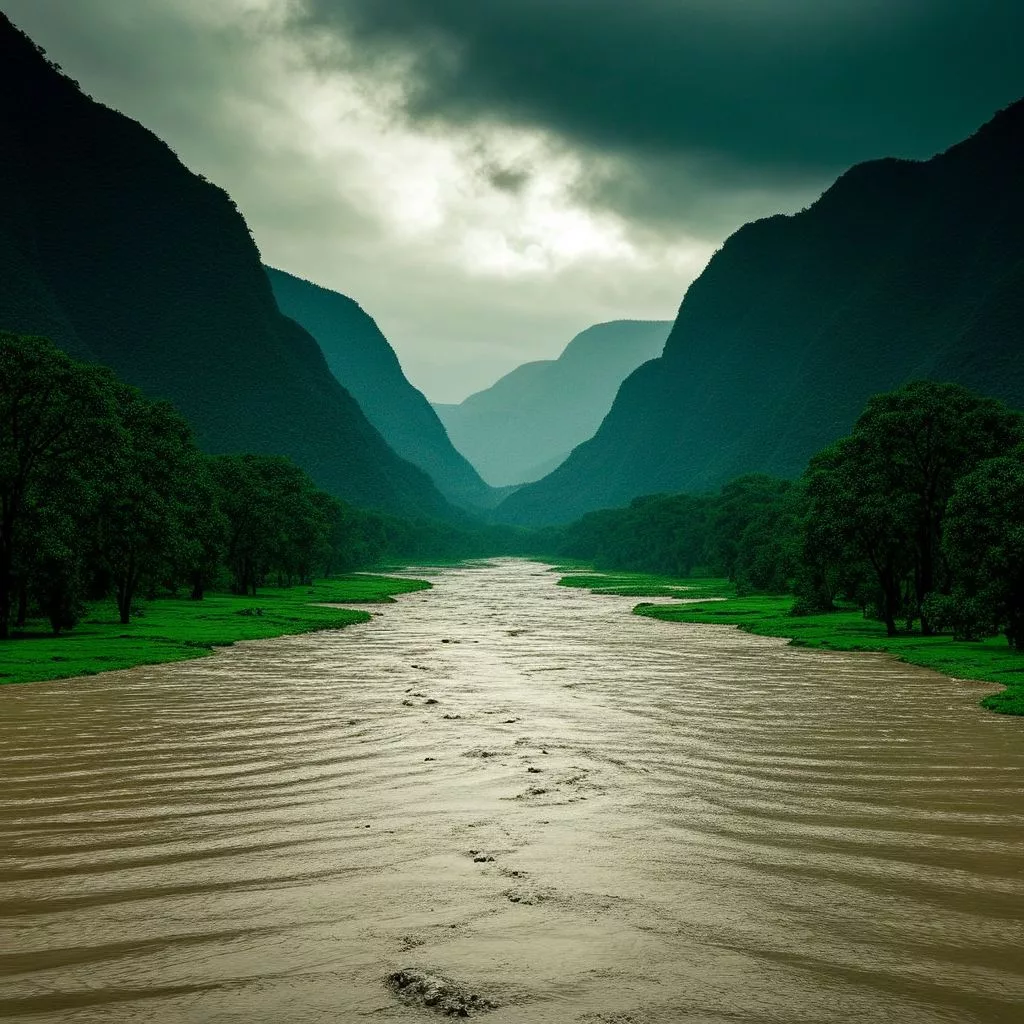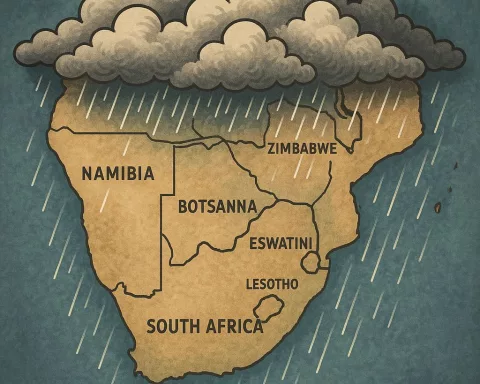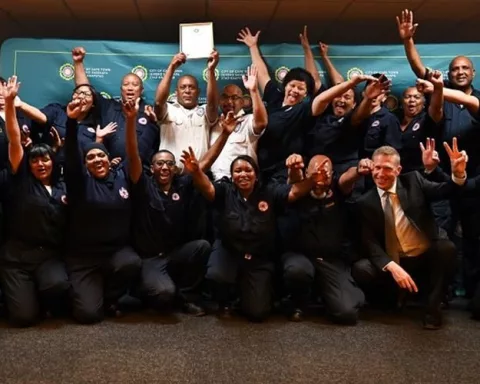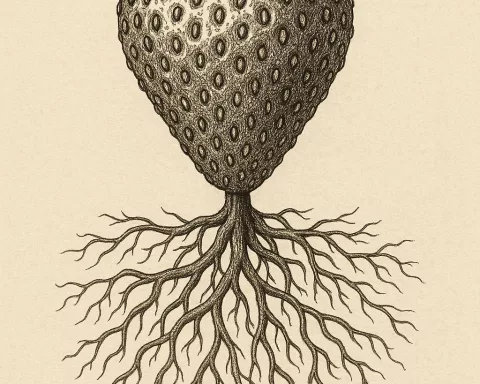In KwaZulu-Natal, South Africa, floods bring a harsh mix of beauty and destruction. The rains can transform landscapes but also drown homes and families, leaving communities in grief and chaos. Ntombikhona Mhlongo’s story highlights the pain of losing loved ones and being trapped by rising waters. Yet, through the heartbreak, the spirit of togetherness shines as neighbors help one another, embodying the idea of Ubuntu—caring for one another. As they rebuild, there is hope for a better future, where art and community strength inspire resilience against nature’s unpredictable dance.
What are the impacts of flooding in KwaZulu-Natal, South Africa?
Flooding in KwaZulu-Natal (KZN) has devastating effects, including loss of life, displacement of families, and destruction of homes. The recurrent floods expose societal vulnerabilities and challenge resilience, prompting calls for improved urban planning and community preparedness against future climate-related disasters.
The Unpredictable Dance of Nature
The raw beauty of nature has long been a source of wonder and a muse for artistic endeavors. However, this same force can turn destructive, challenging the resilience of those in its path. In the province of KwaZulu-Natal (KZN) in South Africa, nature’s unpredictable temperament is all too familiar. Repeated flooding has carved new features into the landscape and profoundly impacted the communities residing there.
A recent downpour on an otherwise ordinary Tuesday night vividly illustrated nature’s unpredictable power once again. Lamontville, a Durban suburb, became one of the most severely affected areas, where the rain seemed to mock the already scarred landscape. The image of rain-drenched shantytowns set against a swelling river conjures a haunting tableau reminiscent of Romantic-era art, showcasing nature’s dominance over human endeavors.
In the wake of these floods, KZN is left grappling with significant loss and devastation. The community mourns those claimed by the relentless waters, including members of close-knit families. The personal account of Ntombikhona Mhlongo, who faced the terrifying ordeal of being trapped by rising waters, highlights the profound human cost of these natural calamities. Her story is a poignant reminder of the delicate balance between vulnerability and the tenacity of the human spirit.
Echoes of History and Societal Struggles
Mhlongo’s experience mirrors historical events where communities worldwide have confronted nature’s wrath. Catastrophes like the 1927 Mississippi River flood and Hurricane Katrina reveal not only geological forces at play but also highlight societal vulnerabilities. In KZN, the recurrent floods expose the fragile living conditions many residents endure. Families, including Mhlongo’s, displaced by previous floods find themselves in precarious temporary shelters, at the mercy of the climate.
This relentless cycle of displacement and rebuilding brings to mind the enduring struggle faced by Sisyphus in Greek mythology. Communities work tirelessly to reconstruct their homes, only to have them threatened once more by nature’s fury. Yet, within this ongoing cycle lies a chance for significant change—a call to re-evaluate urban planning and infrastructure in flood-prone regions. Global examples, such as the Netherlands’ sophisticated dike systems and Japan’s advanced flood management techniques, offer valuable lessons.
The floods in KZN also underscore the broader challenges of climate change and environmental responsibility. With increasingly erratic weather patterns, such disasters may become more frequent, urging immediate action on both local and global scales. The resilience demonstrated by KZN’s residents must be supported by proactive measures from authorities to mitigate future risks and enhance community preparedness.
Community Strength and the Spirit of Ubuntu
Beyond the implications for policy, these floods prompt deeper reflection on community and solidarity. Disasters often bring out the best in people, where acts of kindness and heroism shine through the darkest times. Neighbors become allies, and strangers turn into saviors, embodying the principles of Ubuntu, a Southern African philosophy of interconnectedness and mutual support.
The floods, while causing immense grief, have also mobilized communities into action. Local organizations, grassroots initiatives, and community leaders have stepped up to provide essential aid to displaced families. Their efforts not only offer immediate relief but also highlight the power of collective action in overcoming adversity.
Moreover, the floods have sparked crucial dialogue about sustainable development in KZN. As the province rebuilds, it presents an opportunity to incorporate environmental considerations into urban planning. Implementing green infrastructure solutions, such as permeable pavements and natural water retention systems, can help reduce flood risks while enhancing the quality of urban life.
Artistic Expression and a Path to Resilience
In the realm of art, the floods in KZN have inspired a new wave of creative expression. This emerging genre captures the wild, unpredictable beauty of nature and the resilience of those who withstand its challenges. Artists, poets, and musicians find inspiration in the dynamic interplay between water and land, translating the essence of the floods into their work. This artistic surge parallels historical movements born from societal and environmental upheavals, offering a platform for reflection and healing.
The convergence of art, community action, and resilience in KZN reflects a broader human narrative. Throughout history, societies have faced natural disasters, only to emerge stronger and more united. The KZN floods, despite their devastating impact, reveal pathways to a more sustainable and resilient future.
While the memory of the flooding lingers, so too does the indomitable spirit of the people. Their stories, like that of Ntombikhona Mhlongo, are woven into the fabric of KZN’s history, serving as a testament to both the formidable power of nature and the enduring strength of human resilience.
FAQ
What are the main impacts of flooding in KwaZulu-Natal, South Africa?
Flooding in KwaZulu-Natal results in profound loss, including fatalities, displacement of families, and destruction of homes. It reveals the vulnerabilities of communities and exacerbates the challenges of rebuilding, stressing the need for better urban planning and preparedness for future climate-related disasters.
How does flooding affect community dynamics in KwaZulu-Natal?
The floods often bring communities together, highlighting the spirit of Ubuntu, which emphasizes mutual care and support. Neighbors assist each other in times of crisis, fostering a sense of solidarity that can lead to collective action for recovery and rebuilding efforts.
What challenges do residents face after flooding events?
Residents face the immediate challenges of displacement, loss of property, and the emotional toll of grief over lost loved ones. The longer-term effects include living in temporary shelters and the struggle to rebuild homes in a context where climate change makes future flooding more likely.
How are local communities responding to flooding in KwaZulu-Natal?
Community organizations and grassroots initiatives are stepping up to provide essential aid to those affected by floods. These responses often include distributing food, providing shelter, and mobilizing local resources to help rebuild lives and homes.
What role does art play in the aftermath of flooding in KwaZulu-Natal?
The floods have inspired a wave of artistic expression, where artists use their creativity to capture the beauty and destruction of nature. This artistic response not only serves as a form of healing but also reflects community resilience and raises awareness about environmental issues.
How can urban planning improve resilience against flooding in the future?
There is a critical need for improved urban planning that incorporates sustainable practices, such as green infrastructure and advanced flood management techniques. Learning from global examples can help mitigate the risks of flooding and enhance community preparedness for future climate challenges.












